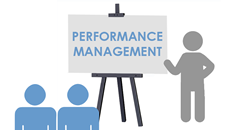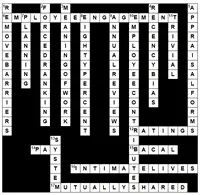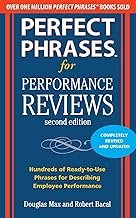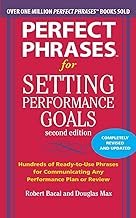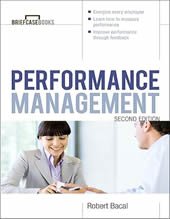How To Take The Pain Out Of Performance Reviews By Lora J Adrianse
Editor's Summary: One of the reasons performance reviews are uncomfortable or "painful" is that then tend to put the manager and employee on opposite sides. When both people feel they are on the same side and working towards the same goals, the process is much more productive. Here are some suggestions for making performance reviews more productive, and more comfortable.
The Painful Approach
For many years, "performance management" was of an annual event dreaded by both the management and the workforce. For a week or two every year the manager would virtually isolate himself and ponder the stack of review forms staring him in the face. Chances are there was very little data tracked, so he'd try to rack his brain for the past year so he could "evaluate" his employees. In the meantime, a silent tension was building within each of the employees. Always anticipating a "surprise", they had no idea what to expect. After all, "how far back could the manager remember?" and "what will he remember?" Regardless of the outcome, everyone would breathe a sigh of relief when it was over.
It's Different Today
Today more than ever before, the entire performance management process is in the spotlight. Companies need factual, reliable systems to make tough business decisions. Performance management data is being used not only to measure individual performance, but also to measure benchmark strength, the potential human capital, and the performance of segments within the company. It's all crucial today, and it's here to stay.
The timing is perfect for managers to optimize performance review processes and engage each employee in the process.
The Possibilities
Imagine what it would be like if the annual performance review process transformed into an annual strategy session. No tension, no getting blindsided and no negative energy. A time for the manager and employee to come together to reflect on the past year, formally acknowledge accomplishments, strategize development opportunities and identify goals. Yes, there would still be a fair amount of time involved, but wouldn't it be worth it if both the manager and the employee could walk away feeling good about it?
Creating a partnership approach to the performance review process not only produces powerful results, but also empowers employees. By proactively contributing to the process, employees feel more in-control, and are motivated to perform better and achieve more.
How To Create A Partnership Approach To Performance Management
The First Ground Rule
As with most new processes, communication is the essential factor that can determine the success or failure of your initiative, and especially a change. So, the ground rule is, communicate openly, honestly, often, and completely.
Getting Started
Start with communication to your team. Tell them what, why, and especially, what's in it for them. Then schedule a series of meetings with them to work through the details as suggested below. It's extremely beneficial to get a volunteer to document the outcome of each meeting. After the meeting send the document back to the group to confirm and/or clarify agreements.
Establish Shared Understandings
Establishing shared understandings and agreements takes the guesswork and assumptions out of the performance review process.
Work with your team to create a list of performance management criteria that needs to be understood by all. Some examples:
Definitions of each performance competency
Definitions of rating scales or systems
Performance standards
Success indicators
What will be measured
How it will be tracked
Create Support Processes
Creating support processes will become nucleus of the partnership approach. In other words, the support processes you create with your team become their critical opportunities to contribute to the process.
Again, work with your team to create the processes that will support your performance review process. Some examples:
Weekly or bi-weekly meetings to discuss progress, roadblocks, etc.
Monthly, quarterly or semi-annual reports to track accomplishments, progress, etc.
A proactive ongoing feedback process - both employees and managers actively seek feedback regularly (what's going well, what can go better, what needs to change)
A year-end process for compiling the information and planning for the annual strategy/review discussion
A self-review process for employees - managers can request that self-reviews are submitted before the manager writes the review.
Integrate The System
Now, put your process in action. Think of your "shared understandings" as your guide to performance standards and measurements. Your support processes are the tools you use to gather and compile performance data. Now, all you need to do is to integrate the information into your performance management system and schedule the actual review meeting.
Reflect And Improve
At the end of each performance review cycle take time to get feedback from your team. It's as simple as scheduling a meeting or sending an email. It's a great time to review your shared understandings and support processes. Here are some questions to ask about the process:
What went well?
What could have gone better?
What needs to change?
In Summary
When it's time for the annual performance review process both employees and managers have plenty of factual information, will already know how they're doing, and best of all, will have established relationships and rapport.
The annual strategy/review discussion becomes a time for the manager and employee to come together to reflect on the past year, formally acknowledge accomplishments, strategize development opportunities and plan for the upcoming year. And best of all, the painful surprises have been eliminated.
About The Author
Lora Adrianse is passionate about inspiring the enrichment of growth and development in others. During her 28-year corporate career her most gratifying accomplishments included leadership development, customer/vendor relationship management, mentoring and training. Today, as the owner of Essential Connections, she is a catalyst for clients who aspire to achieve extraordinary results. She is the coach of choice for people who desire to unleash their potential and maximize their personal and professional development. She can be reached through her website www.connectionscoach.com; [email protected]
